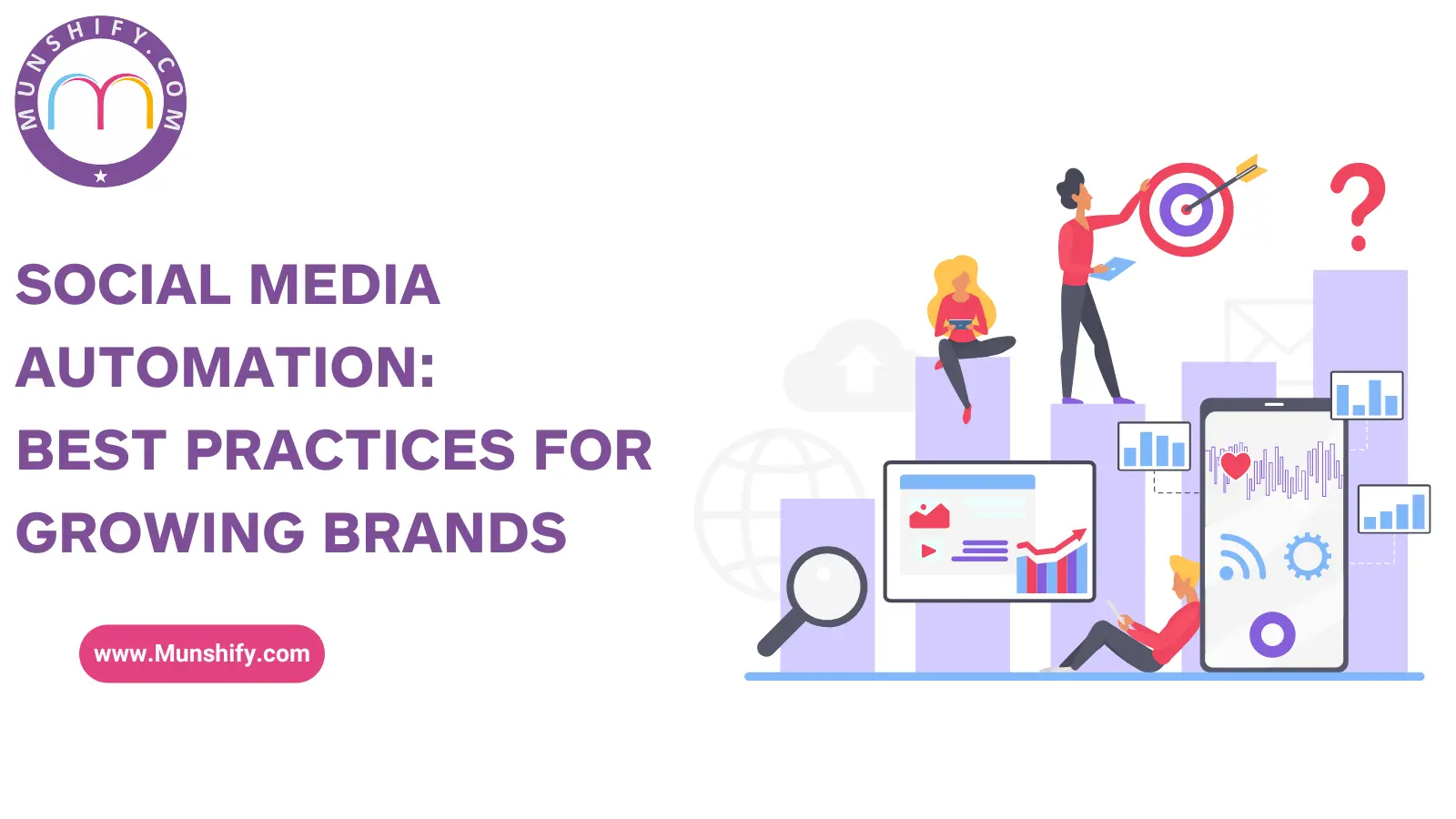Social media has transformed how businesses interact with their audiences, requiring brands to maintain a consistent and engaging presence across multiple platforms. However, managing various channels manually can be time-consuming and prone to inconsistencies. This is where Social Media Automation steps in, offering tools and strategies to streamline processes, optimize efficiency, and enhance overall effectiveness in digital marketing efforts.
Table of Content
- Benefits of Social Media Automation
- Best Practices for Social Media Automation
- Future Trends in Social Media Automation
Benefits of Social Media Automation
- Time Efficiency: One of the primary advantages of social media automation is its ability to save time. By scheduling posts in advance and automating routine tasks such as content curation and posting, brands can focus more on strategic activities like campaign planning and audience engagement.
- Consistency: Automation ensures a steady flow of content, even during non-working hours or holidays. This consistency helps maintain brand visibility and keeps followers engaged without requiring constant manual intervention.
- Audience Engagement: Automated tools enable brands to monitor and respond to audience interactions in real-time. Whether it’s replying to comments, messages, or mentions, automation ensures timely responses, which is crucial for fostering meaningful connections with followers.
- Analytics and Insights: Social media automation tools provide valuable analytics and insights into performance metrics such as engagement rates, reach, and demographics. These insights help brands understand their audience better and make data-driven decisions to optimize their social media strategies.
- Campaign Management: Automation simplifies the process of managing multi-channel campaigns. Brands can schedule posts across different platforms simultaneously, ensuring consistent messaging and maximizing the impact of their campaigns.
Best Practices for Social Media Automation
- Content Calendar: Develop a detailed content calendar that outlines the themes, topics, and timing of your social media posts. This helps maintain consistency and ensures that your content aligns with your overall marketing objectives.
- Personalization: While automation can streamline processes, it’s essential to personalize your interactions with your audience. Use automation tools to segment your audience based on demographics, interests, or behavior and tailor your messaging accordingly.
- Monitoring and Engagement: Set up automated alerts and notifications to monitor brand mentions, comments, and messages. However, avoid generic responses; instead, personalize your replies to maintain authenticity and build genuine connections with your audience.
- A/B Testing: Experiment with different content formats, posting times, and calls-to-action using automation tools. A/B testing helps identify what resonates best with your audience and allows you to optimize your content for maximum engagement.
- Integration with CRM: Integrate your social media automation tools with Customer Relationship Management (CRM) systems to streamline lead generation, nurturing, and customer support processes. This integration ensures a seamless flow of information and enhances the overall customer experience.
- Compliance and Adaptation: Stay updated with platform algorithms, guidelines, and regulations to ensure compliance. Social media platforms frequently update their policies, so it’s crucial to adapt your automation strategies accordingly to avoid penalties and maximize reach.
- Performance Evaluation: Regularly analyze and evaluate the performance of your automated social media campaigns. Use analytics to measure key metrics such as engagement rates, click-through rates, and conversions. Based on these insights, refine your strategies to improve overall performance and achieve your marketing goals.
Future Trends in Social Media Automation
- AI and Machine Learning: The future of media automation lies in AI-driven technologies. AI algorithms can analyze vast amounts of data to predict trends, optimize content, and personalize user experiences.
- Chatbots and Customer Service: Advanced chatbot technologies will play a significant role in automating customer service interactions on social media. Chatbots can handle inquiries, provide real-time assistance, and escalate complex issues to human agents when necessary.
- Video and Live Streaming: Automation tools will increasingly support video content creation and live streaming across platforms. Brands can schedule and manage video posts, analyze performance metrics, and engage with viewers in real-time.
- Ephemeral Content: Tools will evolve to support the management and scheduling of ephemeral content, such as Stories on platforms like Instagram and Facebook. Automation will enable brands to maintain a consistent presence with temporary content that drives engagement and urgency.
- Voice Search Optimization: With the rise of voice search, social media automation tools will need to optimize content for voice-enabled devices and platforms. Brands will focus on creating conversational content that aligns with voice search queries and user behaviors.
Munshify Social media automation is a powerful tool for growing brands looking to enhance efficiency, maintain consistency, and engage effectively with their audience. By adopting best practices and staying informed about emerging trends, brands can leverage automation to streamline their marketing efforts, drive engagement, and achieve measurable results in the competitive digital landscape.
Know more about ours IT Consulting Services.


